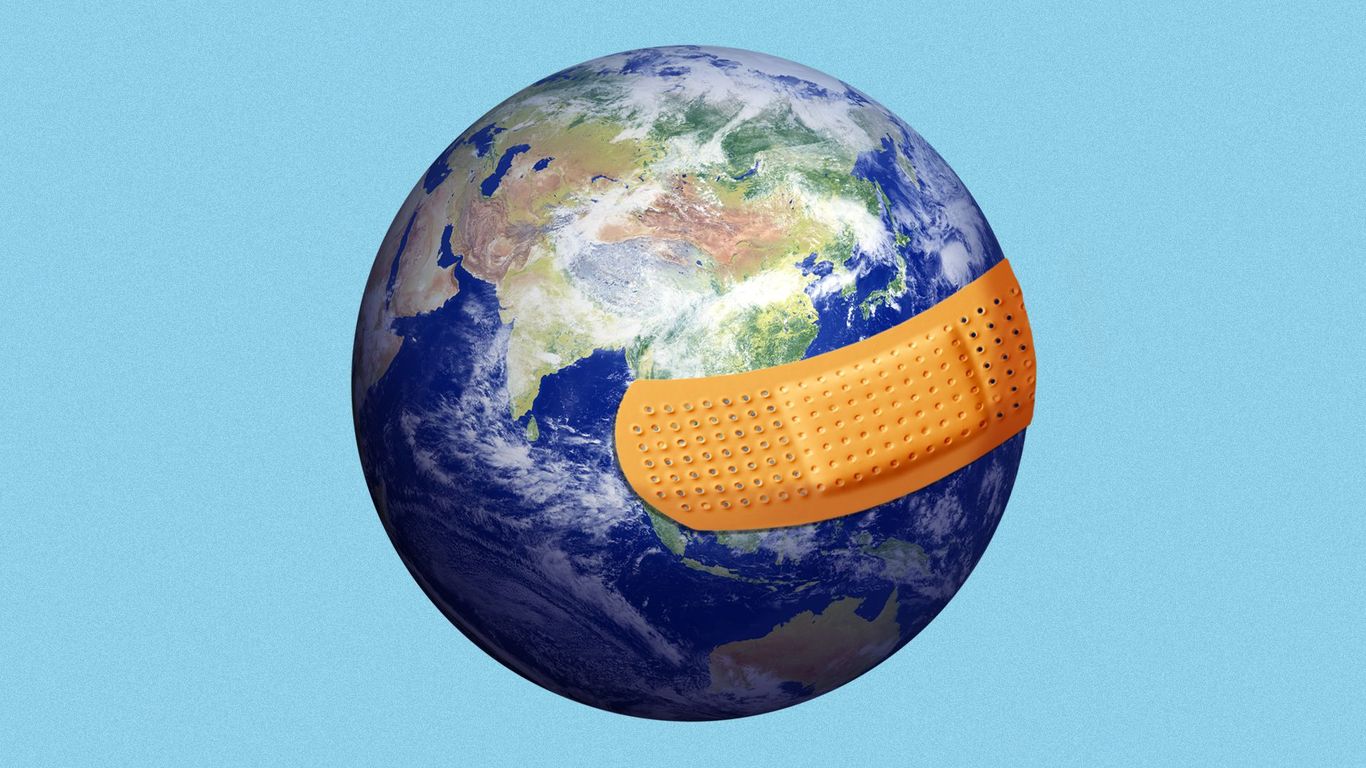
The global COVID-19 vaccination campaign began nine months ago, and 58% of the world's population has yet to receive at least one dose.
The big picture: Raw material shortages, complex and costly manufacturing, and vaccine makers' choices have made it clear the U.S. and its drug companies likely won't get the poor, unvaccinated parts of the world out of the pandemic — but China might.
The state of play: Wealthier nations have more vaccines than citizens who want them, while poorer countries are facing bleaker timelines for when they can administer first doses.
- The U.S. and other Western countries could vaccinate teenagers and provide booster shots to everyone, and still have 1.2 billion excess doses available to send elsewhere this year, according to a report from analytics firm Airfinity.
- Meanwhile, the global COVAX consortium now anticipates receiving 25% fewer doses than expected due to production problems with the vaccines made by Johnson & Johnson, AstraZeneca and Novavax, as well as export restrictions from a major supplier in India.
The vaccines made by Moderna and Pfizer/BioNTech have proven to be both life-saving and reliably produced, but the companies have chosen to sell mostly to high-income countries where they make the most money.
- Moderna expects to make up to 1 billion doses by the end of 2021, but hardly any of the doses are going to places in Africa, Asia and the Middle East.
- Pfizer could deliver as many as 3 billion doses by the end of 2021, with 1 billion going to low- and middle-income countries, the company told Axios. That means the Pfizer shot will inoculate, at most, 500 million people in developing countries.
- Neither company made executives available for interviews about why they made those decisions.
- Moderna directed Axios to its COVAX press release. Pfizer said in a statement its goal "has been to provide fair and equitable access of the Pfizer-BioNTech COVID-19 vaccine to everyone, everywhere."
Reality check: Scaling up vaccine production was understandably slow at first.
- Creating the mRNA vaccines is complex, with several steps that require materials like small plastic tubes, lipids and molecules called "caps" that were in limited supply and had very few vendors.
- "There just weren't enough raw materials. Nobody had gone to the raw material manufacturers and said, 'You need to increase your production at risk,'" said Drew Weissman, an mRNA vaccine expert at the University of Pennsylvania.
- Raw materials are less of an issue now, Weissman said. The bigger issue is standing up more certified manufacturing plants. But that's expensive, and Moderna and Pfizer have invested almost no money in facilities outside of Europe or North America, where they are needed most.
Yes, but: "It's all technically possible" to expand production further, said Zain Rizvi, a pharmaceutical expert at Public Citizen who co-wrote a report on increasing vaccine supply.
- Rizvi explained how BioNTech bought and repurposed a pharmaceutical plant in Germany last year, retrained staff, and then started producing mRNA vaccines — all within six months.
- This can be done elsewhere. Weissman, for example, has helped set up a plant in Thailand for a different mRNA vaccine candidate.
Between the lines: The U.S. has some level of ownership over Moderna's taxpayer-funded vaccine, but the government has not really helped other countries make it even though some clearly want the help.
- "We have asked Washington to transfer technology for vaccine production, but U.S. officials said it is something that should be decided by the private sector," a South Korean official told the Financial Times.
What to watch: China has ramped up exports of its Sinopharm, Sinovac and CanSino vaccines, which can be stored at normal refrigerator temperatures, leading some to believe China will be the global savior.
- Experts are also banking on two researcher-led vaccine candidates — Corbevax and NDV-HXP-S — that are much cheaper and more easily mass-produced than the mRNA vaccines.
The bottom line: "If we're going to get out of the pandemic, we need all [vaccine] options," said Susan Carpenter, an immunology expert at the University of California Santa Cruz.
"world" - Google News
September 13, 2021 at 04:00PM
https://ift.tt/3lmmLhe
The U.S. isn't vaccinating most of the world — but China might - Axios
"world" - Google News
https://ift.tt/3d80zBJ
https://ift.tt/2WkdbyX
Bagikan Berita Ini














0 Response to "The U.S. isn't vaccinating most of the world — but China might - Axios"
Post a Comment